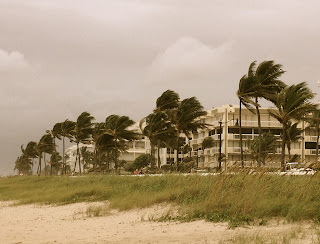Welcome back to the BURR lab’s Blog on Coral Spawning 2012!
We are excited to be embarking on a new season with new and
old students and projects.
First off, congratulations to Rachel, who earned her
Master’s degree from her work on the upside-down jellyfish, Cassiopea spp. Her fruitful research
last year has revealed some interesting patterns in the way that these
jellyfish take up and maintain their algal symbionts. In addition to being back
in the field this year to help us with our coral spawning work, Rachel is also
writing up her research for publication, which is the primary way scientists
communicate their findings.
Noel, who investigated the genetic link between symbionts of
adult and newly settled corals, is in the final stages of sample processing and
will be graduating this fall. Impressively, he has taken up a full time job as
a laboratory technician while finishing his thesis. This means that he could
not join us in the field this summer and his hard work and good attitude are
missed!

Daniel Joseph (DJ) is a new member of the BURR lab and is commencing his Master’s degree this year. His project will investigate the potential for adult corals to pass their algal symbiont to the egg and sperm bundles in coral species that are generally known to take up symbionts from the environment between generations. He will be using molecular techniques as well as good old-fashioned microscopy to test his hypotheses.
Shelby is in it for the long haul and is working her way
through her Ph.D. research. The success from last year’s spawning has provided
a plethora of interesting data on how the physiology of the reef-building coral
Montastrea faveolata changes depending
on the symbiotic algal type it is associated with. The summer started with
testing the sensitivity to high temperatures of one-year-old larvae that we
settled last summer and maintained for a whole year. These results will help us
to understand and predict how corals will fare in our warming oceans. This
summer, she will be expanding these questions by exposing coral larvae with
mixes of symbionts to see how these more complex systems function.
Anke is working as a Research Scientist in our lab and has
been heading our microarray analyses. She has been working with the Medina lab
at the University of California Merced to analyze functional gene expression of
M. faveolata after it has formed a
symbiosis with different types of algal symbionts. The symbiosis has been
monitored over 6 months. This year, additional experiments are planned to
investigate the effect of a greater variety of symbiont types as well as a
combination of types. Anke will also follow up on questions that may help us to
better understand why some symbionts can be taken up by the coral and some
cannot.
JULY and AUGUST 2012
 The summer has begun with plenty of excitement. Our corals
settled in 2011 have been well maintained at the University of Miami over the
past year. They were kept with only the symbionts we exposed them to in our
experiments last year. This included corals with either Clade A, Clade B or no
symbionts. We picked up our coral babies on our way to the Keys Marine Lab. These
one-year-old polyps were part of an experiment to measure how corals with
either Clade A or Clade B symbionts responded to increased water temperatures.
This is an important measure since “bleaching” temperatures are occurring more
frequently in our tropical oceans.
The summer has begun with plenty of excitement. Our corals
settled in 2011 have been well maintained at the University of Miami over the
past year. They were kept with only the symbionts we exposed them to in our
experiments last year. This included corals with either Clade A, Clade B or no
symbionts. We picked up our coral babies on our way to the Keys Marine Lab. These
one-year-old polyps were part of an experiment to measure how corals with
either Clade A or Clade B symbionts responded to increased water temperatures.
This is an important measure since “bleaching” temperatures are occurring more
frequently in our tropical oceans.We used an instrument called a PAM fluorometer to detect any damage to the algae caused by the increased temperatures. We had to take these measurements before sunrise, which meant that for 10 days, Anke and Shelby were up and in the lab by 5:00AM. In the end, our hard work resulted in some nice data that will help us understand the tradeoffs for a coral hosting particular types of algae.
For the last few days of this experiment we had to keep one
eye on the weather forecast as the Keys were being threatened by Hurricane
Isaac, which was making its way through the Caribbean. Instead of beginning our
lab set-up for the upcoming spawning season, we were tying down everything that
could fly and preparing for up to 70 mph winds. With spawning less than two
weeks away, we nervously awaited our fate. In the end, we evacuated the Keys
for a few nights while the storm passed and we will be working overtime to make
up for lost time. At this point we all have our fingers crossed that the worst
has passed and we will have sunny skies in the weeks ahead.
 |
| A view of the beach during tropical storm Issac |



No comments:
Post a Comment